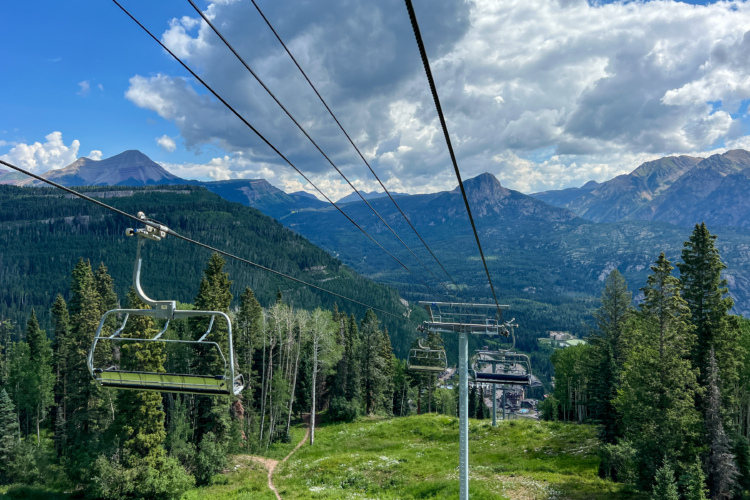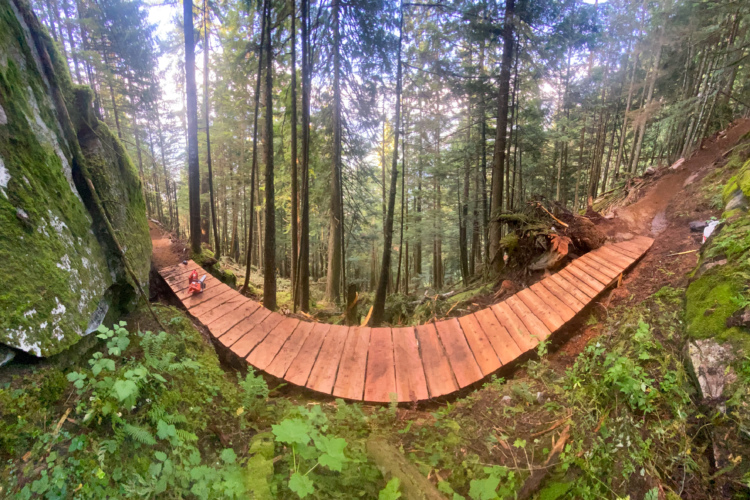
A few weeks ago Reynolds contacted me to test their new All Mountain aluminum wheel, the R29 AM. With the warmer weather of spring and summer, and several trips planned to dream destinations like Crested Butte, Salida, Steamboat Springs, Fruita, and more, I jumped at the chance to give these wheels a proper beating.
The Deets (from Reynolds)
The Rim Material is an aluminium alloy with a claimed rim weight of only 525g, and total wheelset weight of 1750g. Both front and rear wheels are laced with straight pull 28 spokes and DB nipples. The rim width is a respectable 29mm externally and 23mm internally, with a reported 19mm rim depth to provide a stable and relatively wide tire platform.

Mounting and Setting them up Tubeless
I received these wheels out of the box setup with an XD driver for my XX1 drivetrain. They are compatible with both Shimano and SRAM. They came ready to go for a 15mm thru axle and rear Maxle, but also come supplied with 20mm front end caps and QR rear end caps and a skewer.
The supplied rim strip was a breeze to install, and took me less than 5 minutes. What surprised me, however, is how easy my burly Hans Dampf tires slipped onto the rim, a process that has, in the past, made me contemplate submitting it as a potential Olympic event. I chose to run Orange Seal over Stans in these wheels, for the first time ever, impressed with madslacker’s review of this sealant a few months ago.
I set them up tubeless, and using a large compressor, it took several minutes to get the bead to seat while I worked my fingers around the rim to iron out any kinked spots in the bead. This, however, I feel was not a fault of the rim, but rather an expected complication from a folded tire being installed the first time. I did have a similar issue when I replaced the Hans with a Nobby Nic a few weeks later, which means that some tires may take some finagling to install. I elected to seat them at about 45 psi, take a run around the block, then drop them to my normal 24psi in the front and 25psi in the rear and hope that the sealant stayed put. It did.
After almost 3 months of testing, the tires have held air with no leaks except after a minor crash at the bike park. More on that later.

Moving Out
As with all 29er wheels, these take a little extra time to get up and going. Once you have the momentum, however, they keep chugging along. More importantly, with climbs that involve a lot of stopping and starting, there did not seem to be an appreciable lag, and I was able to keep my bike upright and moving along even over chunkier terrain, avoiding the Lopes “wagon wheel” effect.

Climbs
Coming from carbon wheels that were about 200g lighter than these, I was really curious if I would notice a difference in climbing. I did notice a huge difference going from 2000g aluminum wheels to 1550g carbon wheels a couple of years ago, which I expected–because I paid for it. I have since started running heavier tires most of the time due to the trails I ride, switching from Scwalbe Nobby Nics to Hans Dampfs on both front and rear. That being said, after putting about 20,000 vertical feet on these wheels and tires, over both smooth and very technical terrain, there wasn’t a perceived weight penalty on climbs, even on longer alpine climbs from 8,000-12,000 feet, crawling over jeep roads and trails for up to 8 miles.

Descents
My local trails are located on the Colorado front range, and after work rides usually involve about an hour of climbing–often over brutally steep sections littered with rocks–followed by equally-steep and often rowdy bits when pointed downhill. I didn’t have to worry about the Reynolds wheels at all over loose chunder at speed, tricky babyheads, gnarled rocky sections erupting from the singletrack, or 3-4 foot drops to flat. Of the more impressive descents that these wheels endured, Green’s Creek in Salida and Doctor’s Park in Crested Butte come to mind. Both of these trails have miles of raw singletrack, littered with big rocks, roots, unexpected drops, and have speeds in excess of 30 mph without much pedaling. I never had to worry about these wheels at all on this type of terrain.

Bike Park
I tested these on green, blue, and black runs at Steamboat Bike Park. Though not chock full of rock gardens, SBP has its fair share of tight, crazy lines and some big drops and jumps. The wheels performed beautifully, with almost no perceived flex while railing around berms, and were solid on some of the larger jumps and tabletops. I actually cased a shallow 6-foot gap jump, and although the tire burped down to about 10 psi, I was able to ride out the rest of the run–and the wheel was true and strong as ever. I was impressed that the wheel was basically unfazed by such an impact. In fact, I took two hard diggers at about 20mph, and thanks to proper armor and a little luck, I was able to get up immediately and ride away. These wheels seemed bombproof, but I would not recommend willfully testing that yourself.

Issues
To be honest, the only issue I had with this wheelset was the rear axle loosening after about two months of riding. On that particular day of hard riding in Salida, I noticed that my shifting suddenly became sloppy. After a group effort, we realized that the rear hub axle was unscrewing itself, which we hand-tightened to temporarily remedy the problem. Truth is, this could happen with any wheel, but I mention it here not only for transparency, but as a reminder that you should check this on your wheelset periodically… something that is easy to put off and forget. I contacted Reynolds about this and they said they have not had any other complaints about the axle…. so it’s probably just a fluke.

Overall Testing Impressions
After riding carbon hoops almost exclusively for the past two seasons, I had my hesitations about returning to an aluminum wheelset given the flex and other mechanical problems I have had with other manufacturers in the past. I feel like I put these wheels through the wringer, not only riding through the gnarliest, rockiest terrain I could find, but spinning them up epic climbs as high as 12,000ft, and killing myself doing it. They are both light and sturdy, and held up even under brutal testing conditions. The matte finish and white stickers compliment almost any bike too, which is a bonus. So, if you are looking for an affordable alternative to carbon and don’t mind an extra 150-200g, I would highly recommend these wheels. Truly. They perfectly cater to the trail/all-mountain/enduro rider.
MSRP: $625
God knows I have had my fair share of trouble with wheelsets, and these have exceeded my expectations and did not disappoint. Thanks to Reynolds for sending them over for review!










0 Comments